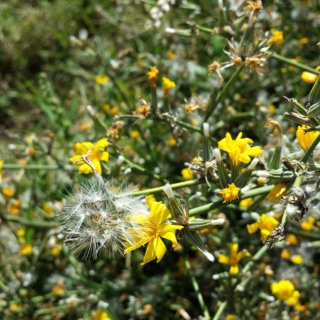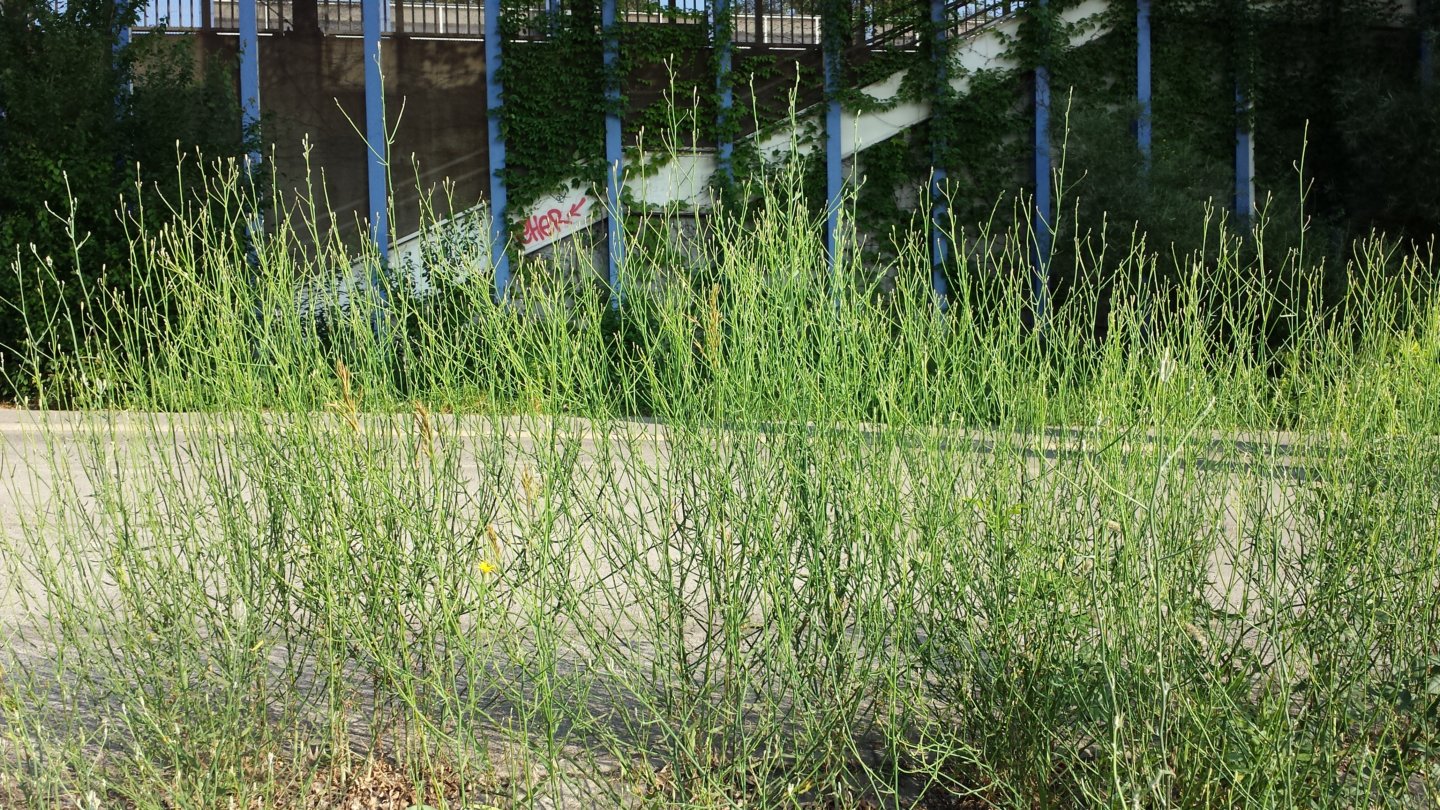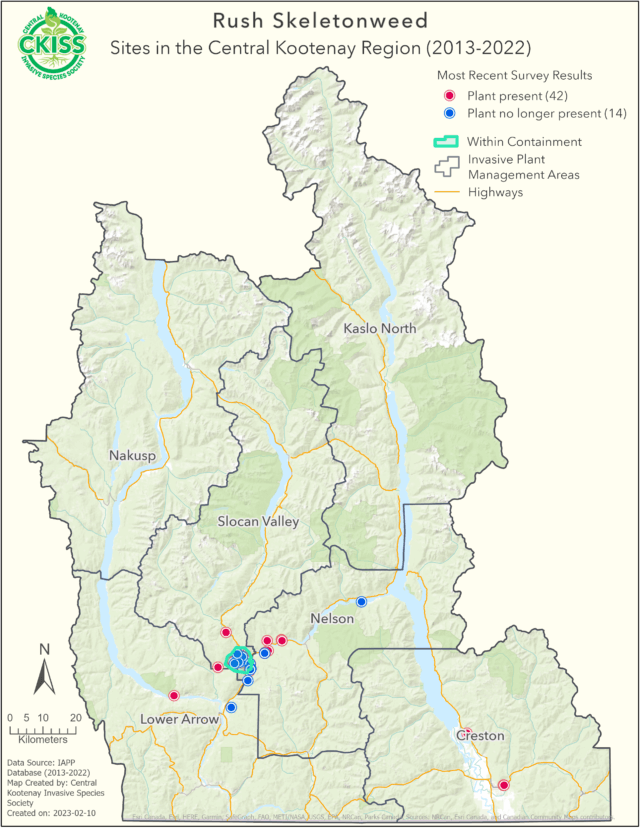Chondrilla juncea
Description

- Native to central Asia.
- Small yellow flowers. Flowers open during the day and close overnight.
- This plant can be difficult to ID without flowers as the foliage is very minimal.
- Long, narrow leaves are barely visible when growing amongst other vegetation.
- Rigid, skeleton-like stems are hairy at the base.
- Produces a sticky white sap when stem is crushed.
- Basal leaves area lobed, basal leaves die as stem grows taller.
- Grows up to 1m tall.
- Highly adaptable and aggressive. Prefers well-drained rocky soils.
Consequences of invasion
- Negatively impacts agriculture by competing effectively with crops and replacing native forage for livestock.
Status in the CKISS region
- Rush skeletonweed is classified as Eradicate on the CKISS Annual Priority List.
- It is present in a limited distribution in the Creston, Lower Arrow, and Nelson Invasive Plant Management Areas (IPMAs), where eradication is the goal and is feasible.
- It has not been found in the Kaslo or Nakusp IPMAs.
- There is a widespread occurrence of it in the Slocan IPMA, where the goal is to contain current infestations and prevent further spread into new areas.
- Unless this plant is growing in its containment area, please report ALL findings of this plant in the CKISS region!
- To learn more about how CKISS classifies and manages invasive species, see our Invasive Species Priority Lists page.
Integrated pest management options
- Prevention: Rush Skeletonweed seeds can be transported by vehicles, equipment and livestock. Ensure they are clean and seed-free before transporting them away from an infested location. Use the PlantWise resource to avoid planting it in your garden.
- Mechanical: Digging, clipping seed heads, and hand pulling can be used to contain a population of rush skeletonweed, but are not an effective form of eradication due to the plant’s extensive root system. All landfills within the RDCK and RDKB accept invasive plant species for free. Ensure your material is bagged in clear plastic bags and notify the attendant that you have invasive plant species. Plants must be identifiable through the bag. For more information please see the RDCK Resource Recovery Bylaw.
- Biological: Bradyrrhoa gilveolella (moth) and Aceria chondrillae (gall mite) biocontrols have been released in BC to control Rush Skeletonweed, and Puccinia chondrillina (stem and leaf rust) is also present in BC.
- Chemical: Chemical control may be an option. Consult a professional to determine if this is appropriate for your situation.


